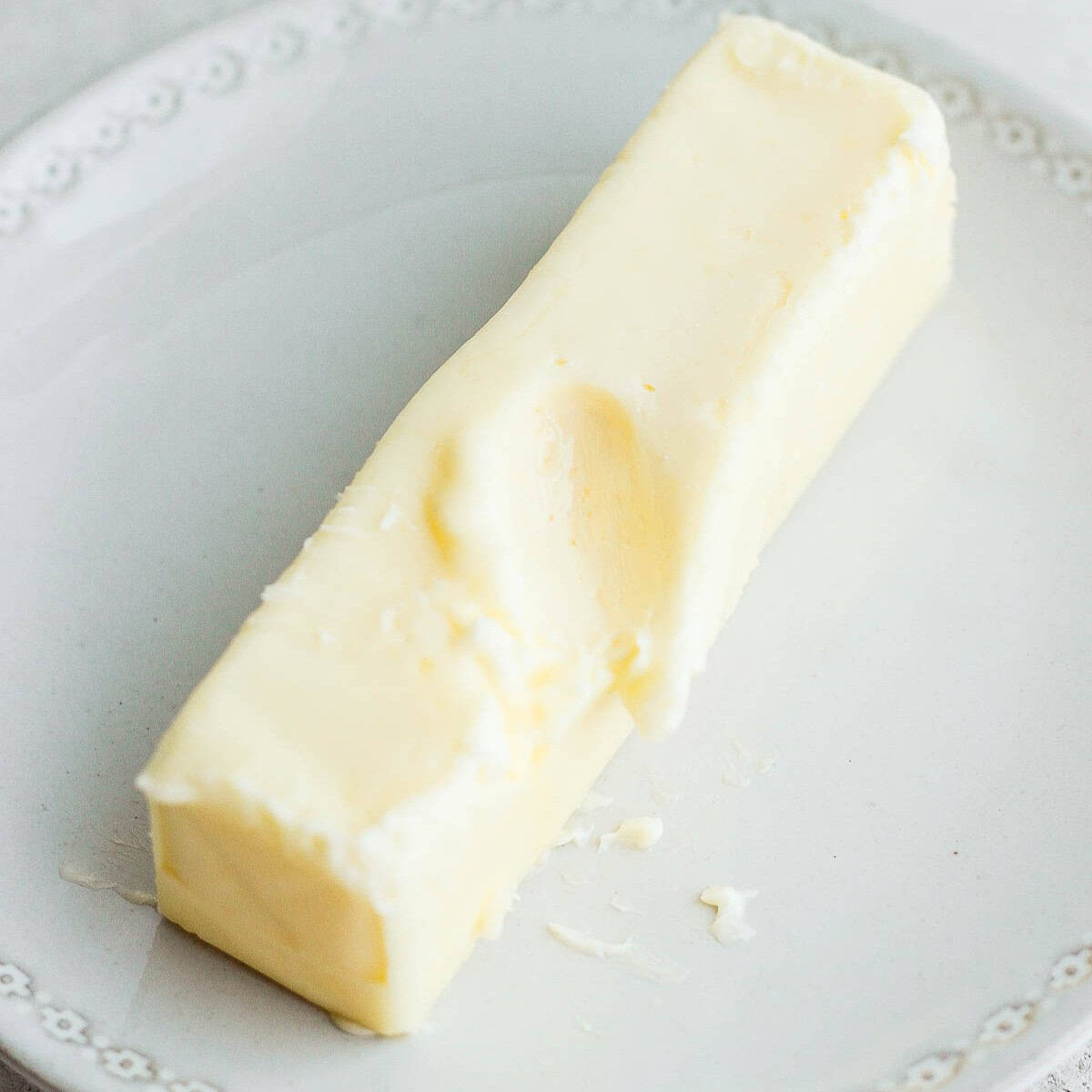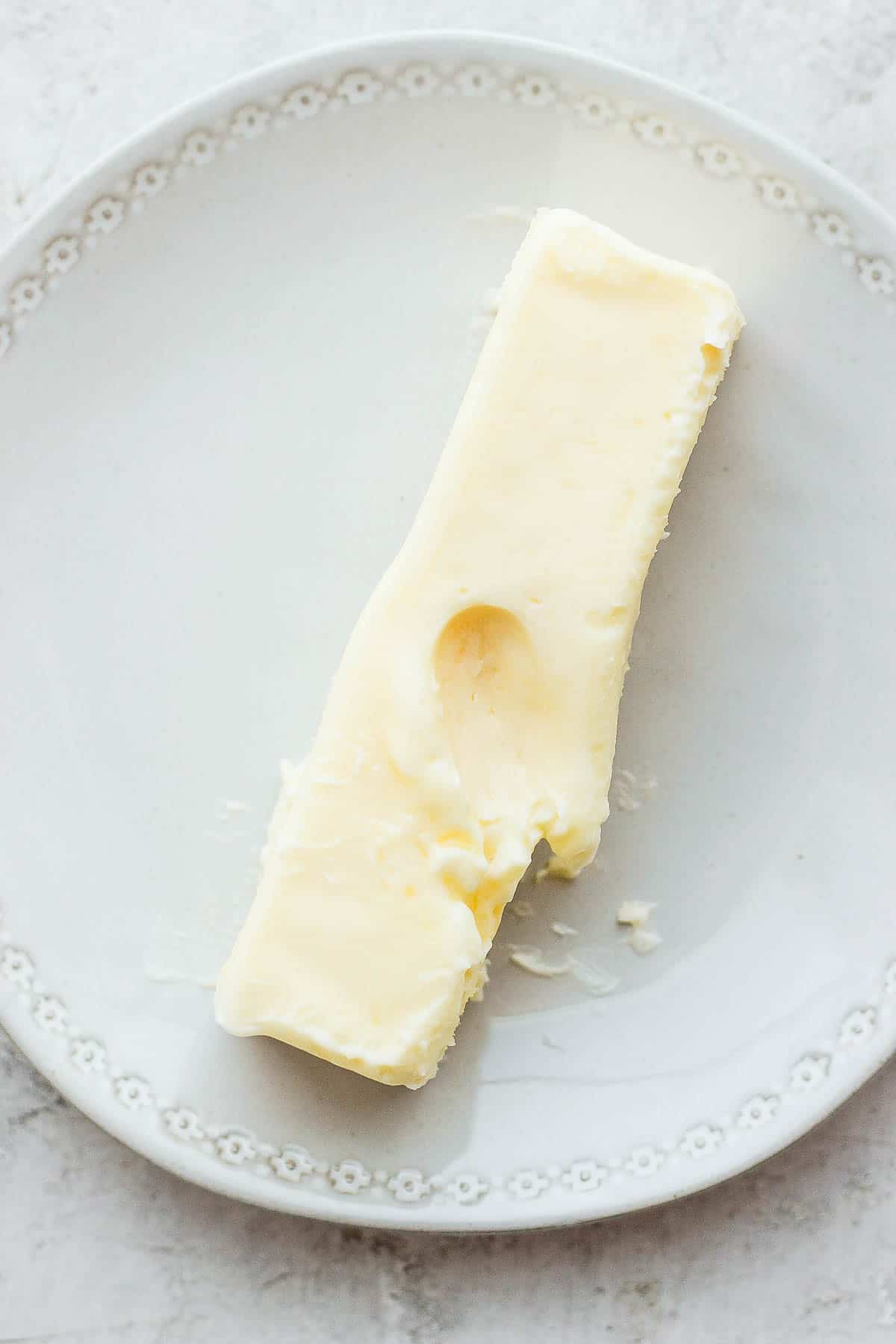How to Soften Butter
Updated Jun 29, 2025
How to soften butter super fast 4 different ways: microwaving butter, cubing it, using a steaming cup, or pounding.
This post may contain affiliate links. Please read our disclosure policy.

Jump to Section
Softening Butter Fast Without Melting It is Easy!

So many baking recipes call for softened butter, but they never tell you how to actually soften it. And if you’re like me, you forget to take it out ahead of time about 99% of the time. This tutorial walks through a few easy ways to soften butter quickly without melting it (which is key if you’re making things like cookies or cakes where the texture depends on it). I’ve got four methods here, pick whatever works best with the time and tools you’ve got.
Happy Cooking!
– Yumna
How to Soften Butter Quickly — Four Ways
Microwave Method


Countertop/ Cubed Method


Steaming Cup Method


Countertop / Pounded Method



How to Soften Butter (4 ways)
Ingredients
- 1 stick butter
Instructions
Microwave
- Place unwrapped butter in 200W microwave and set power level to 5 or 50%
- Cook for a total of 35 seconds, stopping and turning the butter ¼ turn every 10 seconds. Remove from the microwave and use as desired. For older microwaves, go only five seconds between checking and turning.
Countertop/Cubed
- Unwrap butter and cut into cubes. Allow to sit out for 30 minutes on the countertop before using.
Steaming Cup
- Place water in a microwave safe glass and heat it for about 1 minute. Pour the water out of the cup and place the cup over the unwrapped stick of butter.
- Allow 5 minutes to soften the butter and then leave the butter out on the countertop for 10 more minutes before using.
Countertop/Pounded
- Unwrap butter and place into a large ziploc bag or sandwich between two pieces of plastic wrap or wax paper.
- Using a solid wood rolling pin (not a rolling pin with handles as it could break) pound the butter until it is ½ to ¼ inch thick. Allow to sit out for 10 minutes on the countertop before using.
Notes
Nutrition
Nutrition information provided is an estimate. It will vary based on cooking method and specific ingredients used.
Recipes to Make with Softened Butter
- Tahini Chocolate Chip Cookies
- Cranberry Lemon Pound Cake
- Cardamom Cookies
- Banana Chocolate Chip Cookies
- Date Cookies
- Cinnamon Coffee Cake
FAQs
When the stick is oozing liquid, the butter is a no-go for creaming properly, but the whizzes at America’s Test Kitchen have a solution, which involves cooling the butter quickly.
– Do not put the butter back in the refrigerator.
– Instead, take a few ice cubes and stir into the butter.
– The results: after less than a minute of stirring, the butter will cool to a softened stage – right below 70 degrees.
– Remove the cubes and use. The Test kitchen says the added water is negligible.








Comments
Wow, I have been baking for YEARS and never realized this about butter! Thank you so much, I found this so enlightening! Sometimes I would get different results in my recipes and now realize it could have been because of the ‘meltiness’ or temperature of my butter. I will save this tutorial. Thanks Yumna!
I’m so happy you found this! Glad you found it helpful. You’re so welcome!